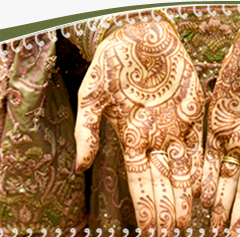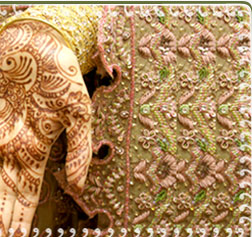Mehndi is called Henna in English. Mehndi originates from Hindustan, which is now Pakistan and India. The actual “Mehndi” tree itself only grows in hot countries. It can grow to approximately 5-6 feet, and its thickness bears resemblance to a garden hedge. The leaves are small and slightly pointed in appearance. When the leaves are fully grown, they are removed, dried naturally and crushed into very fine powder.
Mehndi has a long history. At one time its cooling properties meant mehndi was used to heal people, and so applied on the head and palms. For example, people used to apply mehndi on their heads whilst they worked in the summer sun in order to reduce the risk of sunstroke. Later, mehndi became renowned as a very good hair dye, and also source of nourishment for the hair. Applying mehndi to the eyes was once considered good for eyesight. Furthermore, putting mehndi to the nails not only colours, but was also thought to make them stronger. Old wives tales stated that when applied to the hands and feet of a bride, the darker the colour of the mehndi, the more the bride would be loved by her prospective mother in law.
Mehndi plays a big role in the Asian community. Mehndi is most commonly used at weddings to colour the hands and feet of the bride, and thought to increase her beauty and a source of good luck. Indeed, no bride is complete without mehndi on her hands and feet. Mehndi also plays a significant role in the celebration of all Asian religious festivals such as Eid, Karrwachawth and Chukkreu.
Increasingly, mehndi has become popular in the Western culture as well with style icons such as Madonna promoting it. Mehndi tattoos, and Chinese symbols have become a temporary and favoured fashion statement to the more permanent and expensive alternatives. |



